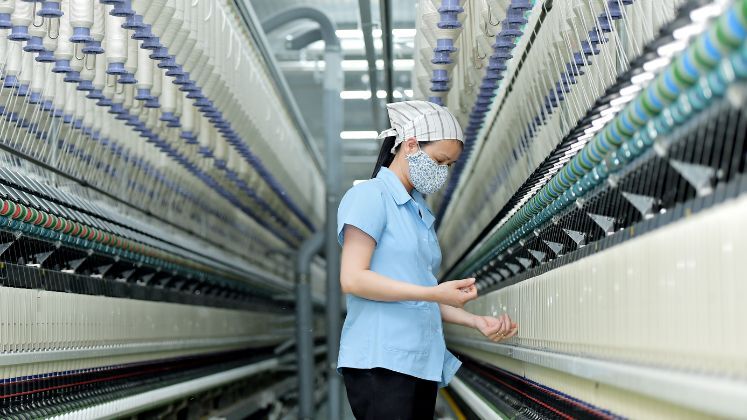
The United States stated on 10th April that it would suspend reciprocal tariffs for more than 75 trading partners, including Vietnam, for 90 days and lower them to 10 per cent. However, the tariff policy serves as a warning to the textile and apparel industry to diversify their sources of raw materials.
The Vietnam Textile and Apparel Association (VITAS) reports that there are currently around 3,800 textile enterprises in the country. About 70 per cent of them make finished clothing, compared to just 6 per cent who make yarn, 17 per cent who make fabric, and 4 per cent who run dyeing facilities.
Around 400,000 tonnes of cotton are consumed in Vietnam each year, but only 3,000 tonnes, less than 1 per cent of the local demand, are supplied via local supply networks. Additionally, domestic fabric manufacturing is small, meeting only 25–30 per cent of market demands.
The sector has long aimed to create specialised material supply centres, according to Truong Van Cam, vice chairman and general secretary of VITAS.
Cheap raw materials from China, South Korea, and a few ASEAN nations continue to be crucial to Vietnam’s industry. The majority of yarn is imported from China, India, and the US because the nation lacks a sizable capacity to cultivate cotton.
Vietnam’s capacity to grow domestic consumption in the face of a challenging global environment is constrained by the fact that it still lacks specific laws to encourage material growth and has not yet transformed its textile industry into a fully functional fashion industry.
Pham Van Viet, vice chairman of the Ho Chi Minh City Association of Garment Textile Embroidery and Knitting, noted that Vietnam lacks a structured market for trading textile and footwear materials. He pointed out that existing supply is limited to small household markets for local retail and a few manufacturers producing only for internal factory use.






